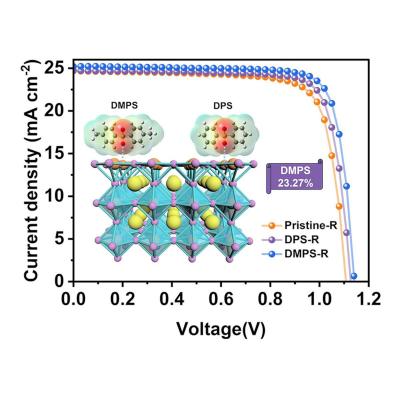Researchers use high-entropy hybrid perovskites to design efficient and stable perovskite solar cells
Researchers from China's Zhejiang University, Westlake University, Southern University of Science and Technology, Chinese Academy of Sciences (CAS) and University of California Los Angeles in the U.S have reported a family of high-entropy organic–inorganic hybrid perovskites for photovoltaic applications.
The scientists built, for the first time, an inverted perovskite solar cell relying on a high-entropy hybrid perovskite material. The result is a device with an improved open-circuit voltage and fill factor, due to reduced non-radiative recombinations and optimized interface.




